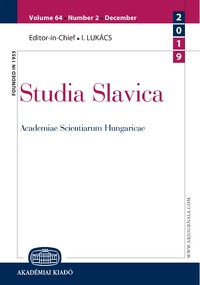Dvojna tradicija latinice u Hrvata: povijesni pregled
The Dual Tradition of the Latin-Script Orthography in the Croatian Language: A Historical Overview
Author(s): Előd DudásSubject(s): Historical Linguistics, Western Slavic Languages
Published by: Akadémiai Kiadó
Keywords: the Croatian language; orthography; Latin-script orthography; historical overview
Summary/Abstract: The history of the Croatian Latin-script orthography is remarkably rich and contains several interesting facts for the researchers; however, only a handful of writings have been published in this matter. The first work written in the topic is Maretić’s history of orthography (Maretić 1889). It is also important to mention the study by Milan Moguš and Josip Vončina (Moguš–vončina 1969), in which they corrected several false statements written by Maretić. Recently, a few more papers on orthographic history have been published (Kapetanovič 2005, Farkaš–Ćurak 2016, Farkaš 2019); nevertheless, it is necessary to point out the work by László Hadrovics, the only researcher in the subject who paid great attention to the dual tradition of the Latin-script orthography in the Croatian language. Following the steps of Hadrovics, the main goal of this paper is to present which cultural historical reasons determined the development of the dual tradition of the Croatian Latin-script orthography as well as to introduce the use of graphemes in detail. The church played an important role in the development of the Latin script. During the Middle Ages, the church counted as the centre of the literacy, thus it is obvious that the ecclesiastical Latin pronunciation defined the evolution of the individual national languages’ orthographies. From this point of view, the Croatian is a special case, as in the Middle Ages, the Southern Croatian areas were strongly affected by the Italian, more precisely by the Venetian language, while in the northern areas, overlapping the Archdiocese of Zagreb, a strong Hungarian impact can be observed. The southern orthographic tradition follows the Italian pronunciation, i.e. the spelling is also based on the current Italian orthography. Nevertheless, in the northern areas, the Latin /s/ phoneme is pronounced in a Hungarian way, as [ʃ] or [ʒ]. The two orthographic systems were in use side by side over the centuries; nonetheless, since the end of the 16th century, there were several attempts to create a “mixed” system, which was successfully carried out only in the 18th-century Slavonian orthography.
Journal: Studia Slavica Academiae Scientiarum Hungaricae
- Issue Year: 65/2020
- Issue No: 2
- Page Range: 249-258
- Page Count: 10
- Language: Croatian

